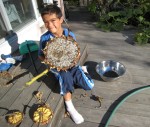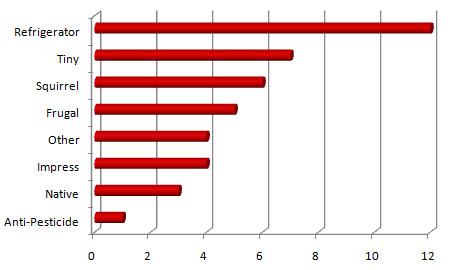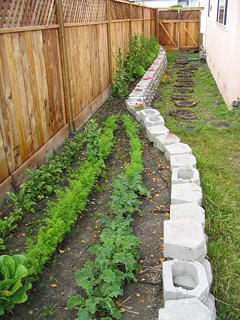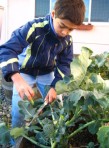
Kids love veggie gardening together!
There are many benefits in introducing children to grow their own food. Parents and educators may wish to help develop responsibility, a sense of accomplishment and contribution to the home, as well as give kids the opportunity to see the magic of watching something grow. Your motivations will be your own, but I encourage you to grow vegetables with your kids.
We came up with a list of “kid-friendly” veggies that
- Kids enjoy – nothing beats picking something and eating it right on the spot
- Are easy to grow – something you’re pretty sure will be successful
You’ll need to consider these suggestions in light of what grows best in your area. For instance, melons don’t do well in our cool, foggy summer climate, so alas, we don’t bother growing them. Lastly, make sure your kids have ease of access to their gardens – either in containers or narrow beds. Remember they’ve got more limited vertical and stretch reach. It isn’t much fun having to bushwack your way to get to a bean!
Early season harvest:
1. Radishes
2. Sugar Snap Peas
3. Strawberries (ok, this is a fruit, but so is a tomato! You get the idea.)
Mid-season harvest:
4. Carrots
5. Pole or Bush Beans
6. Cherry Tomatoes
Mid-to-late season harvest:
7. Corn
8. Melons
9. Potatoes
10. Pumpkins
Root crops like radish help break the top crust and is a good companion to carrots. Kids may not swoon over the taste, but radishes grow quickly, and allow your little ones to quickly make a contribution to the dinner table. Carrots are an age-old favorite which kids can munch on as they learn to thin the rows.
Sugar snap peas, strawberries and cherry tomatoes are wonderful “pop-in-your-mouth” food right off the vine or with a quick rinse of water.
Pole beans are fun to trail along teepees, and delicious raw and cooked. We grow a purple variety (“Royal Burgundy”) that turns green when steamed – a “doneness” indicator!
Fresh, sweet corn can’t be beat (even munching it straight off the stalk), but it takes lots of nitrogen.

Harvesting sunflower seeds
There’s nothing like the sweetness of home-grown melons, if you’re lucky to have both the space and climate to grow them. They will require lots of water, but little ones will love harvesting their desserts!
Tall, majestic sunflowers are impressive to little kids. The hour or two to harvest seeds is a great bonding opportunity on a balmy Indian summer day.

Carving their home-grown pumpkin!
When it’s time to dig out the potatoes, our son invites his neighborhood friends to find the “Easter eggs”.
Pumpkins and gourds can take a lot of room in a garden, but if you’ve got a spare patch that can be left to cultivate the fruit over 4 months, your kids will love to show them off to their friends and schoolmates!
Next up, the “Top 10 Least Desireable Veggies For Kids To Grow” !
Read Full Post »






